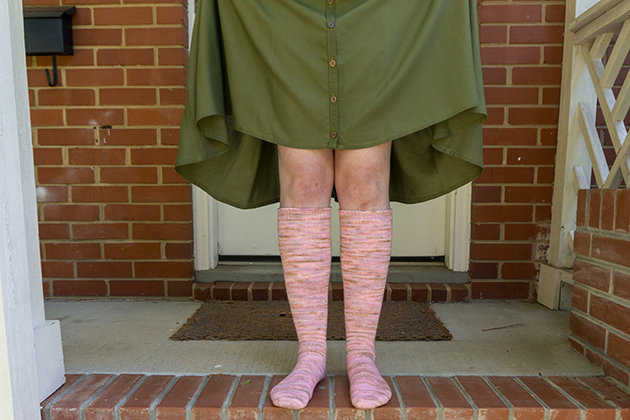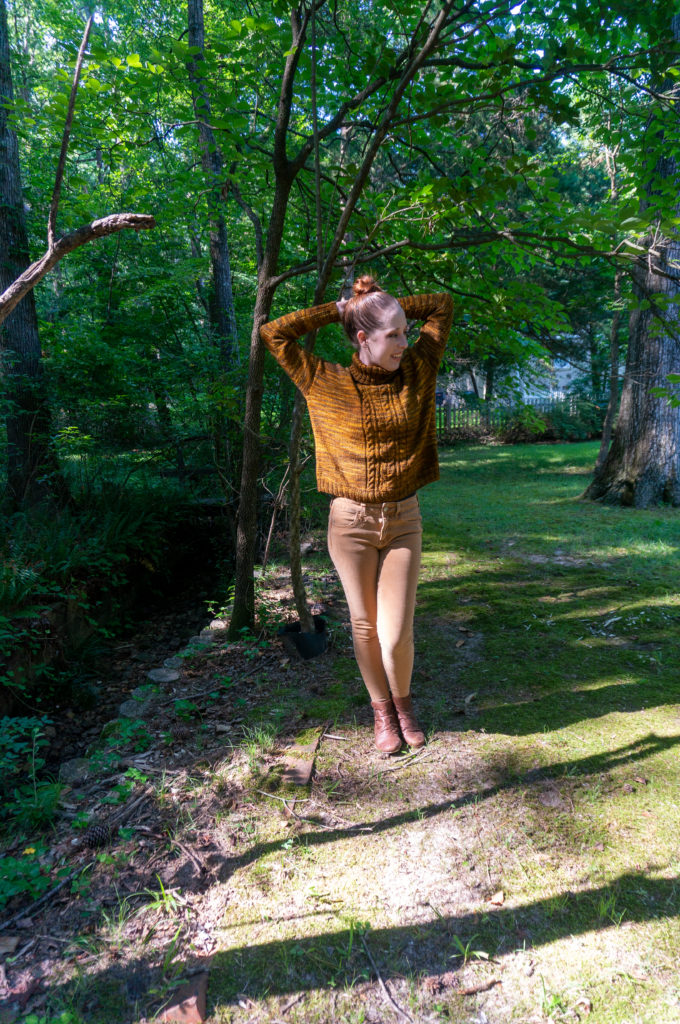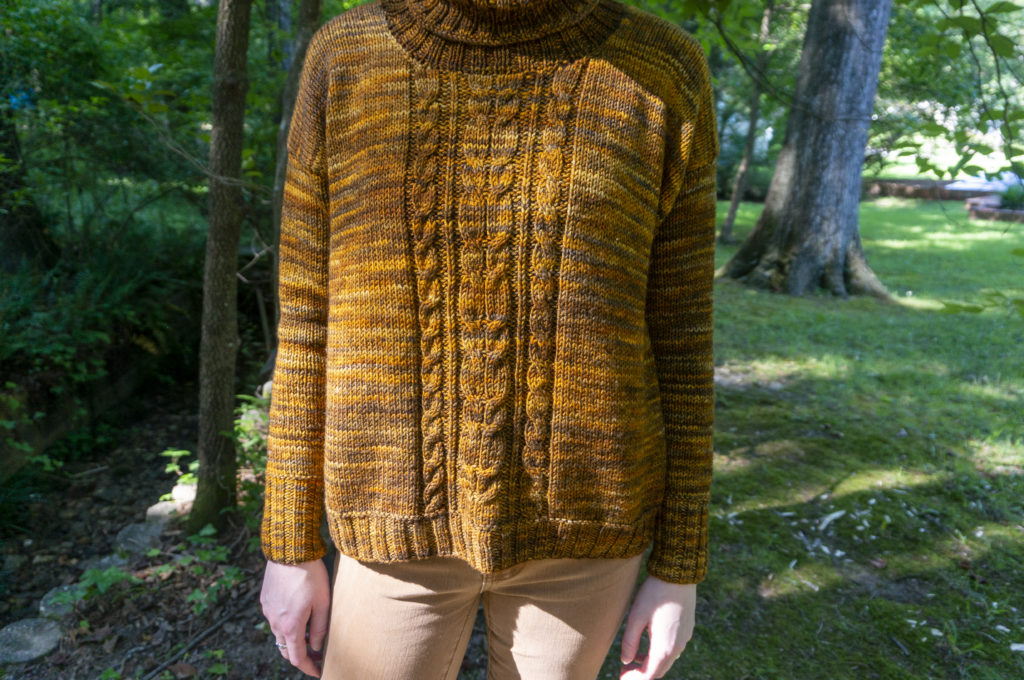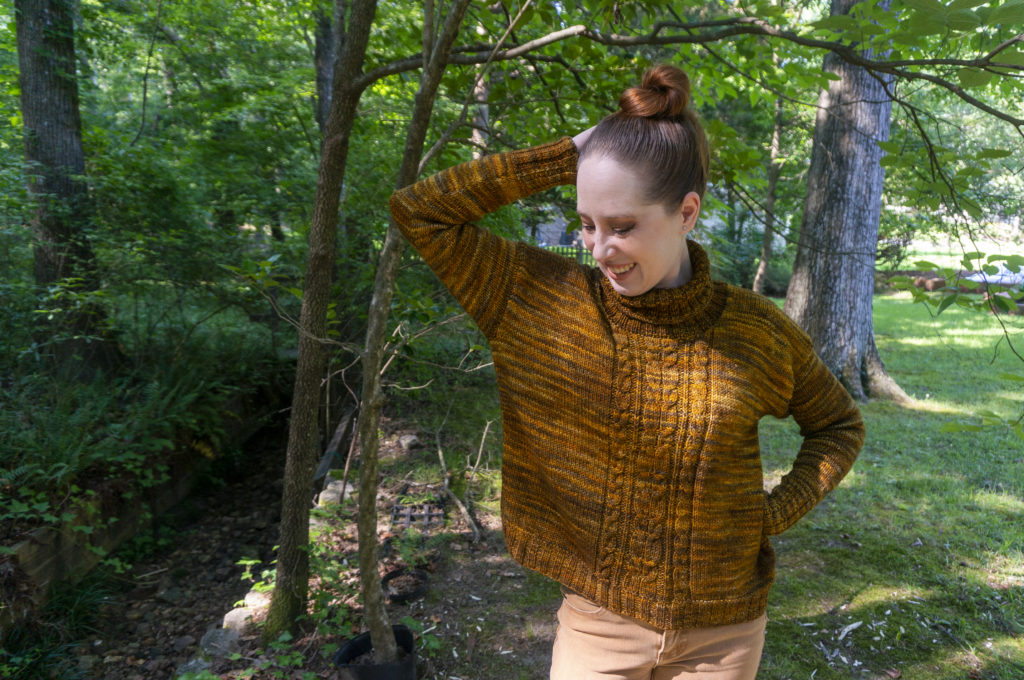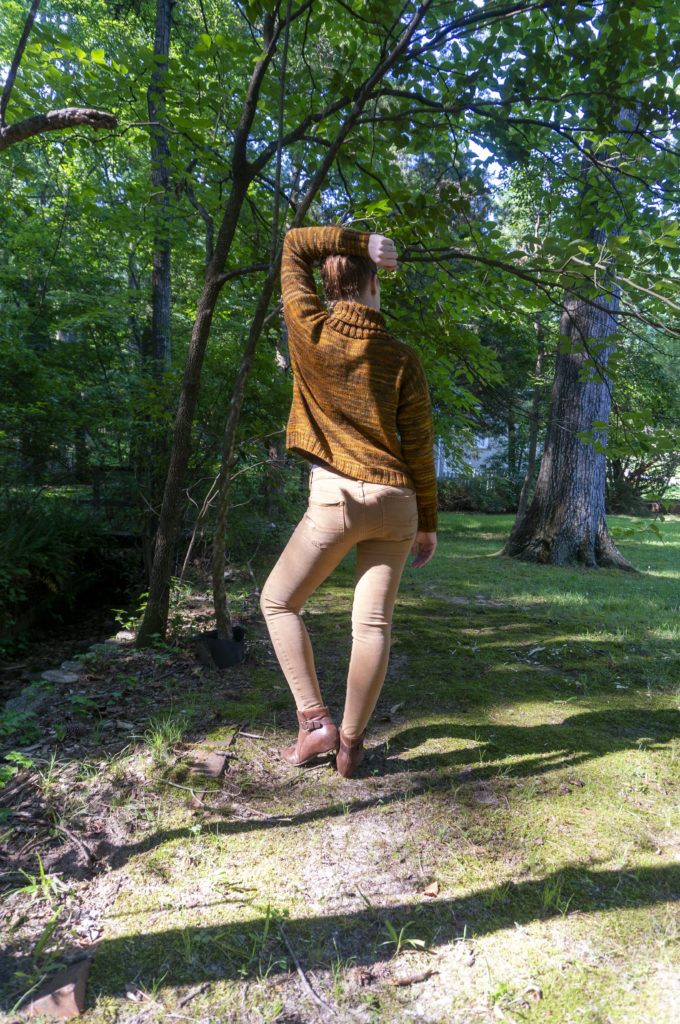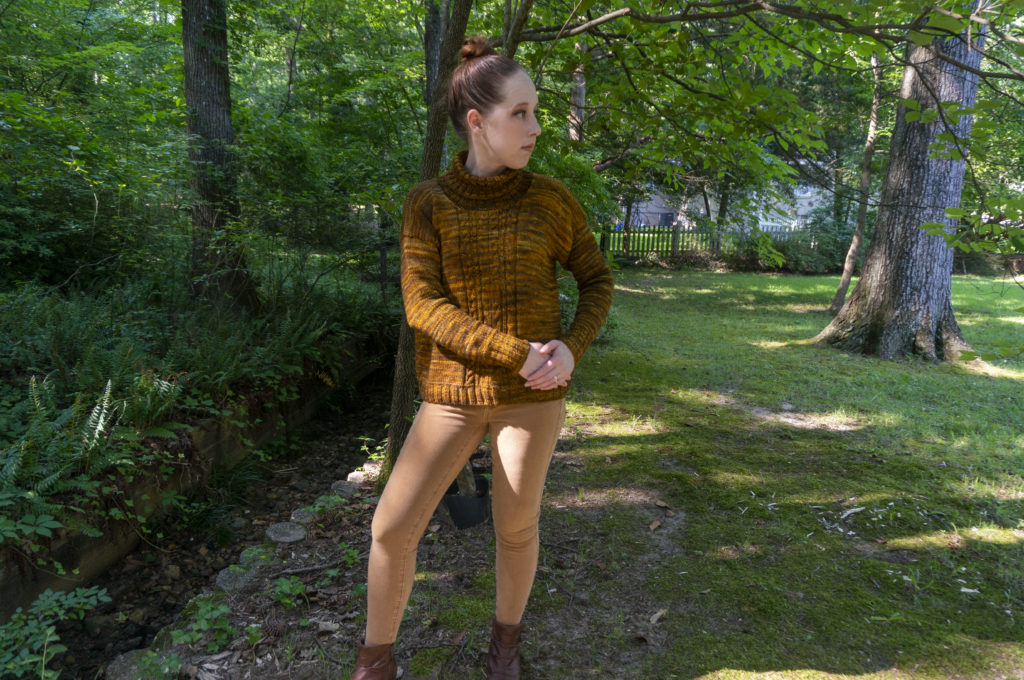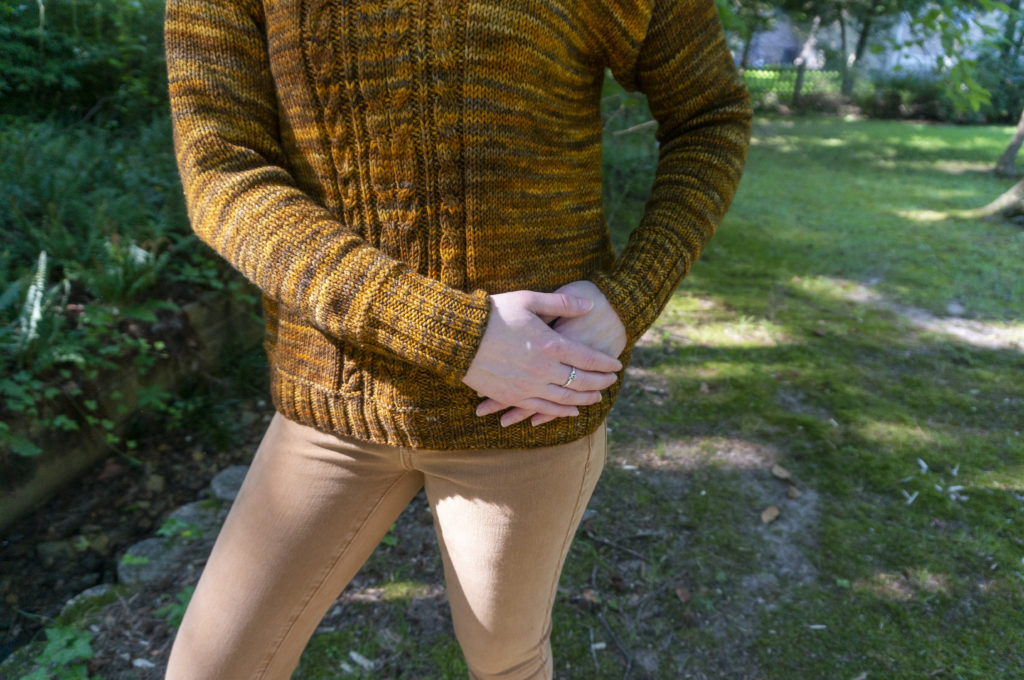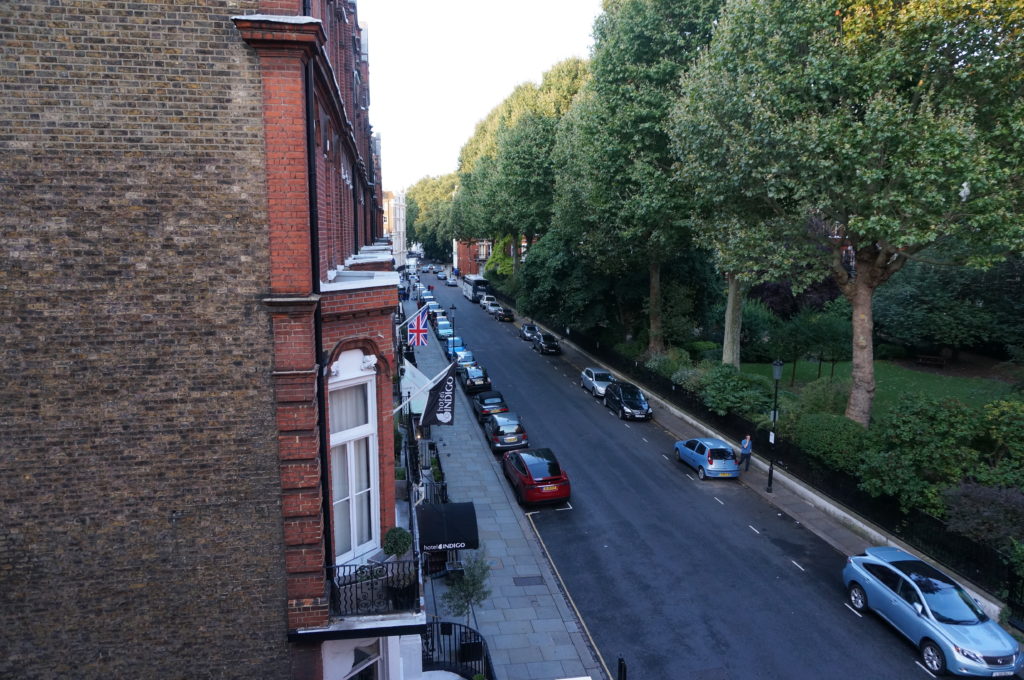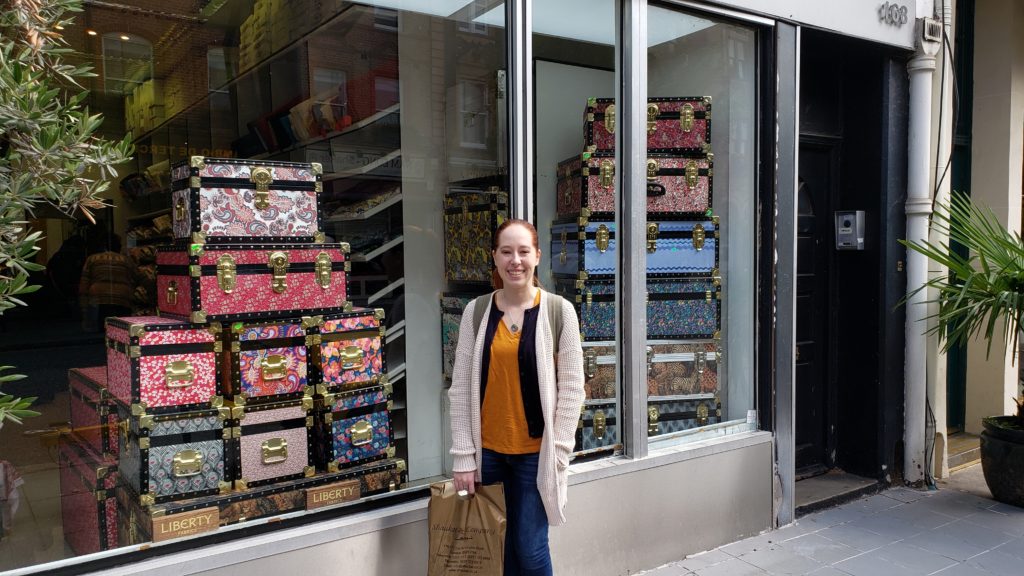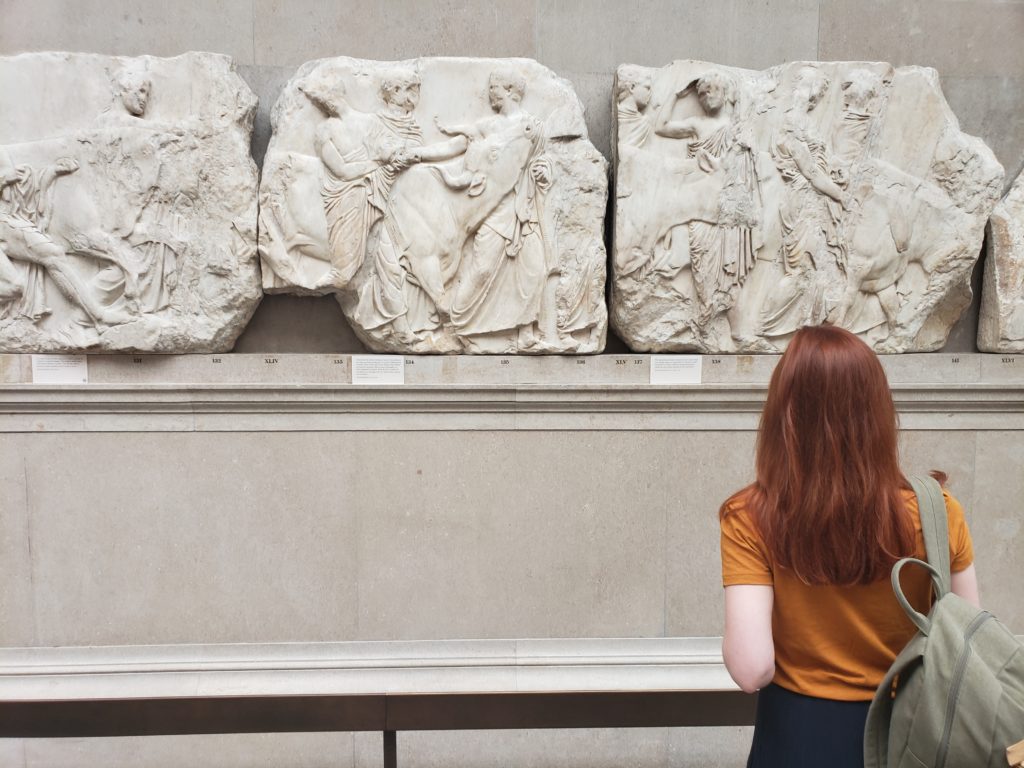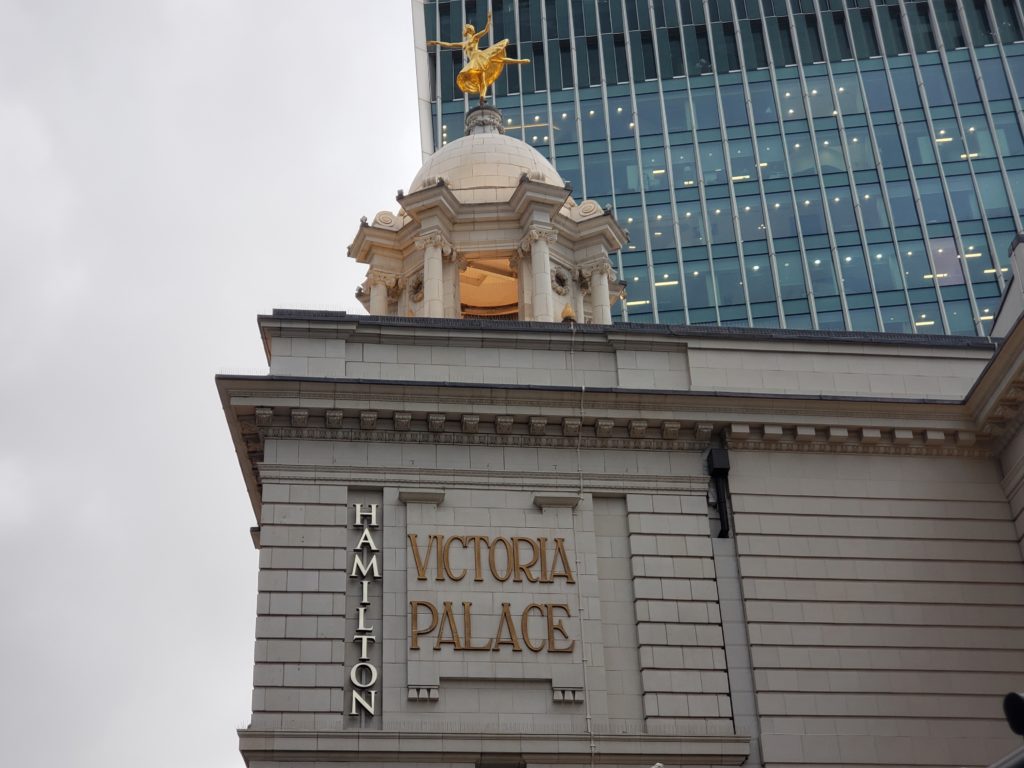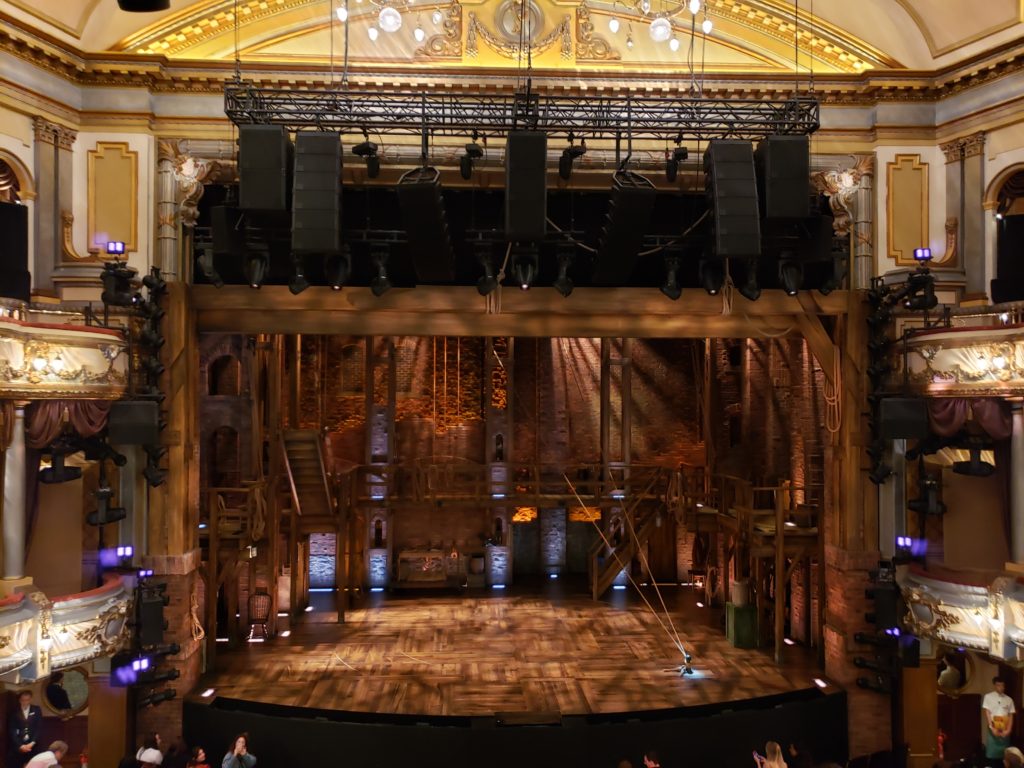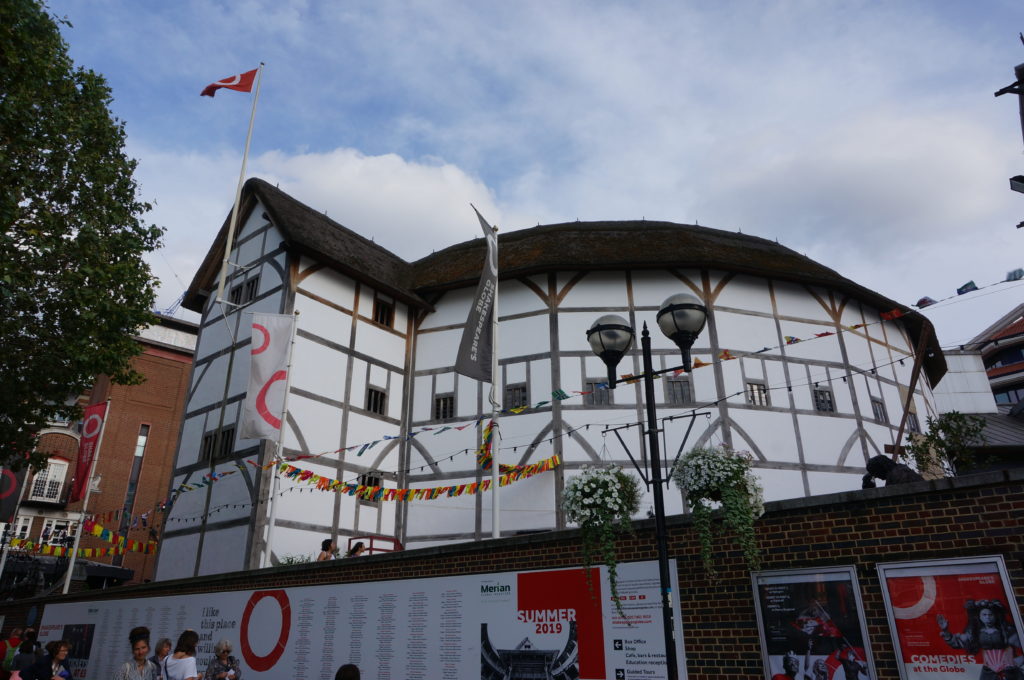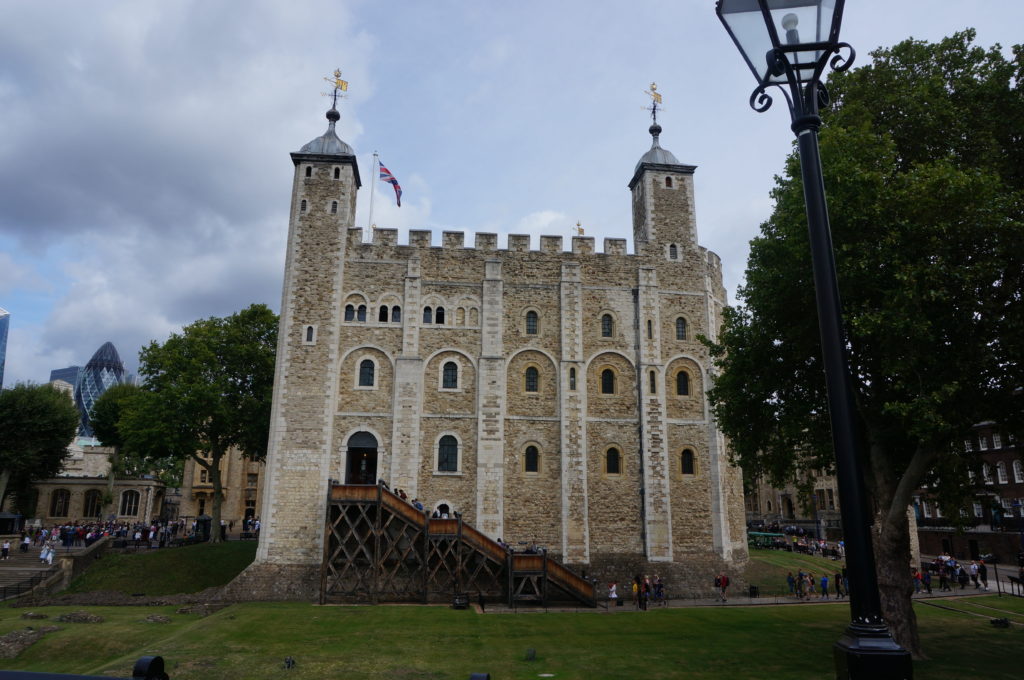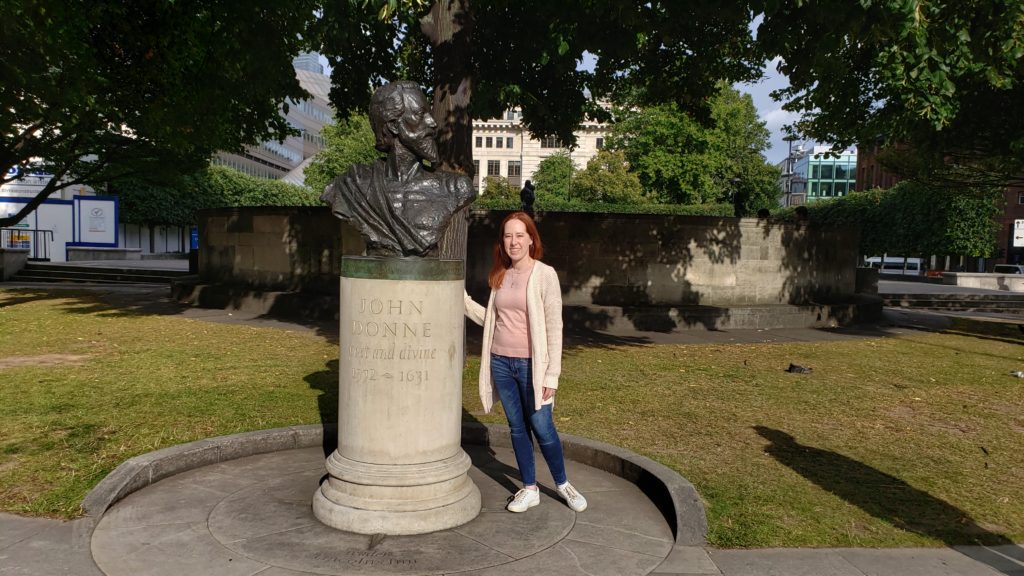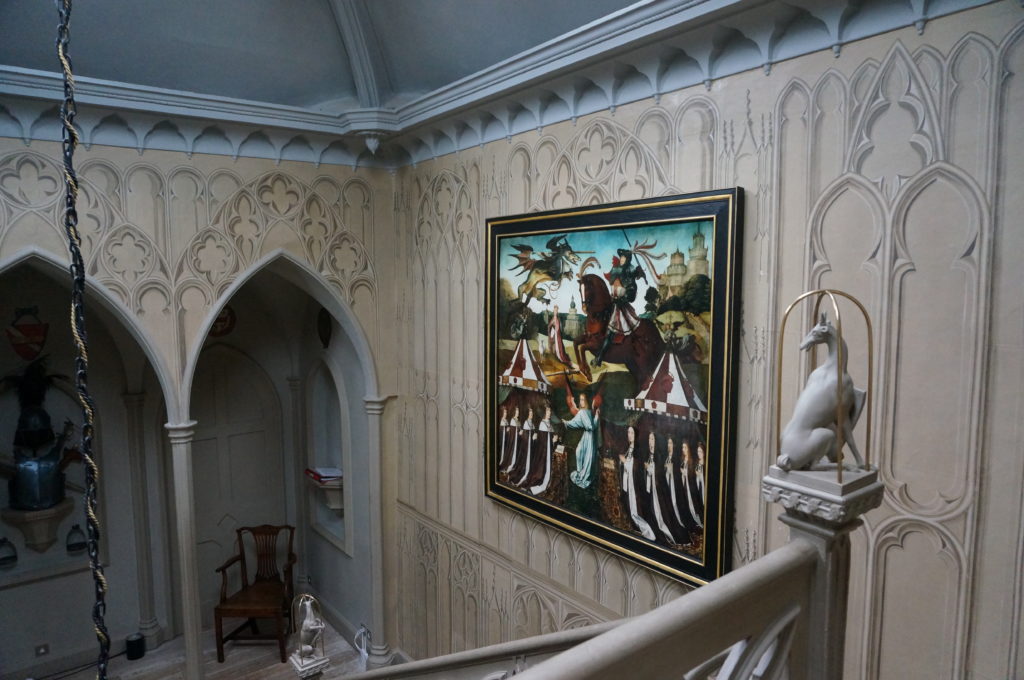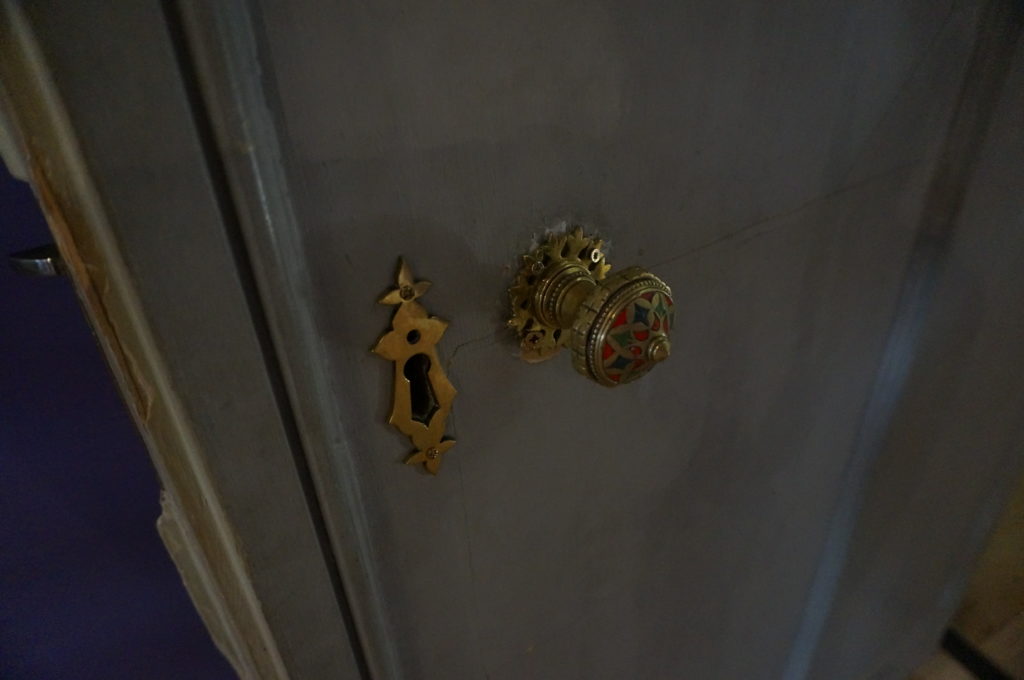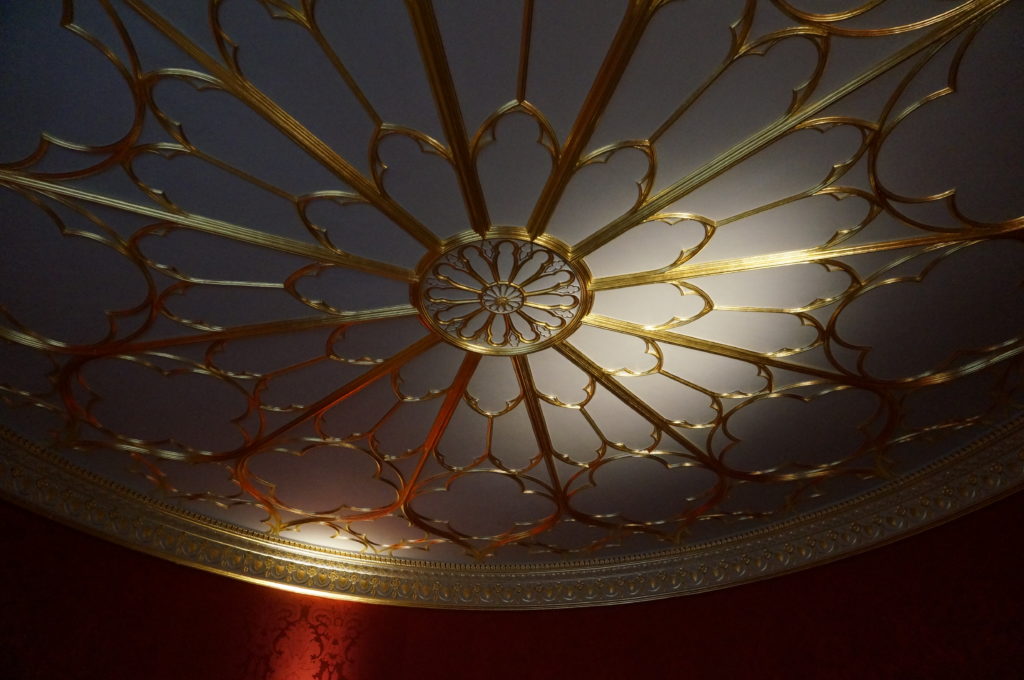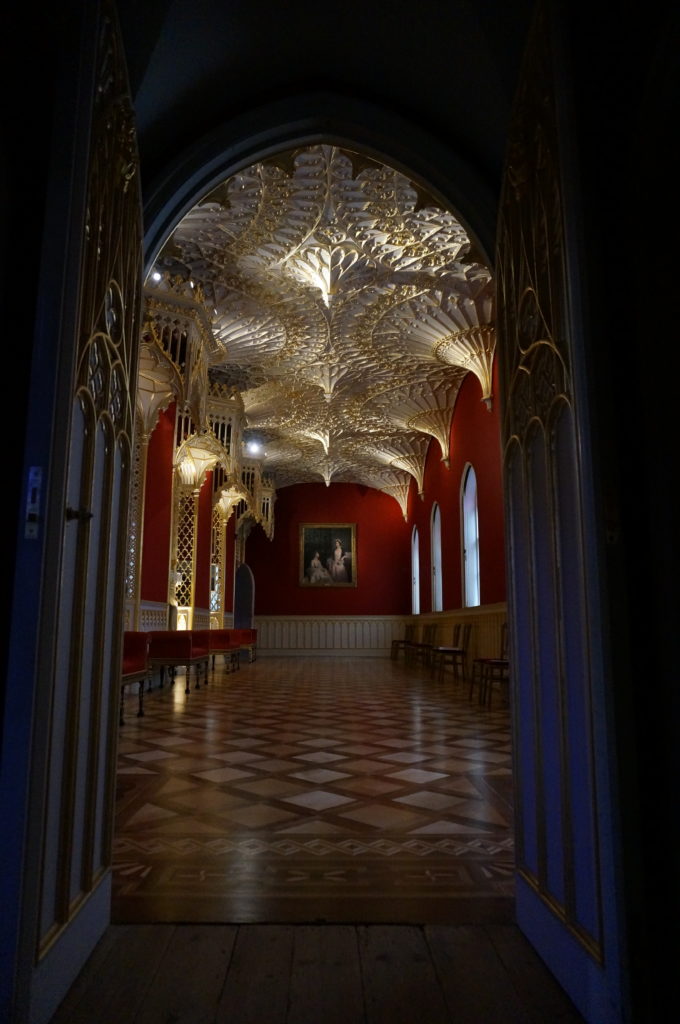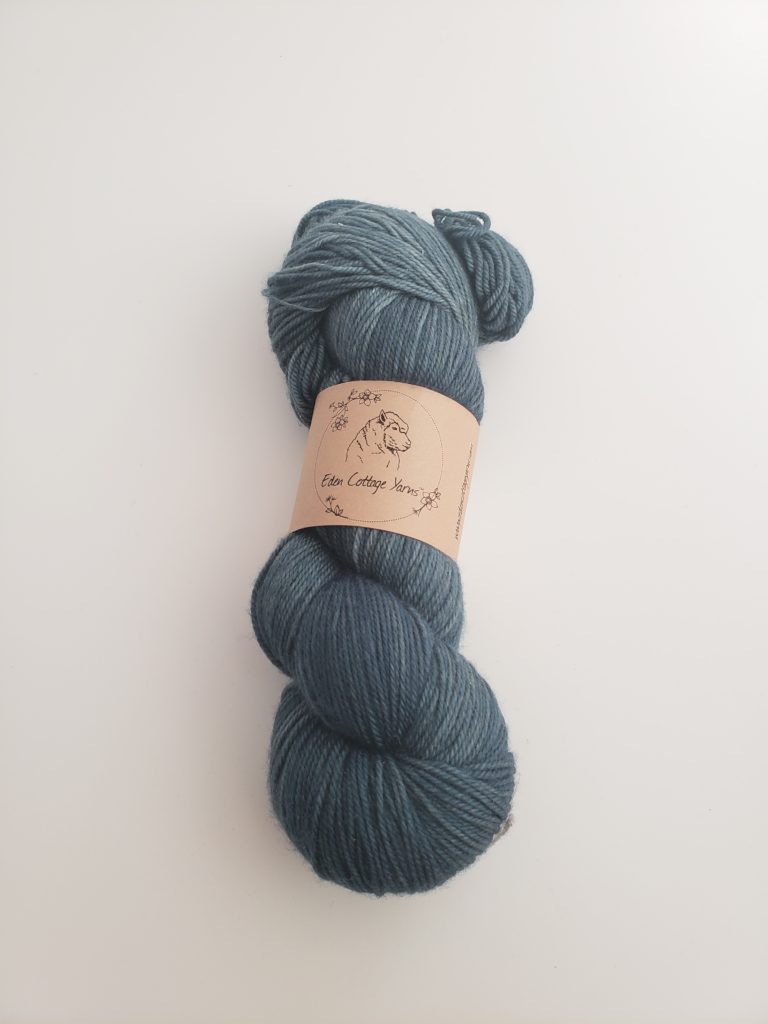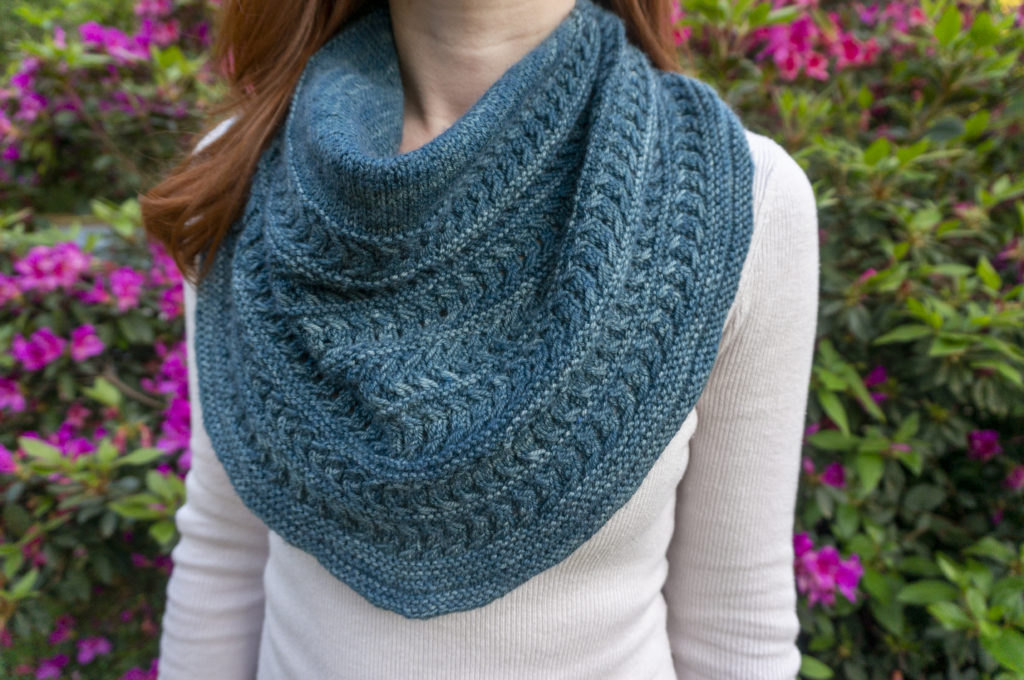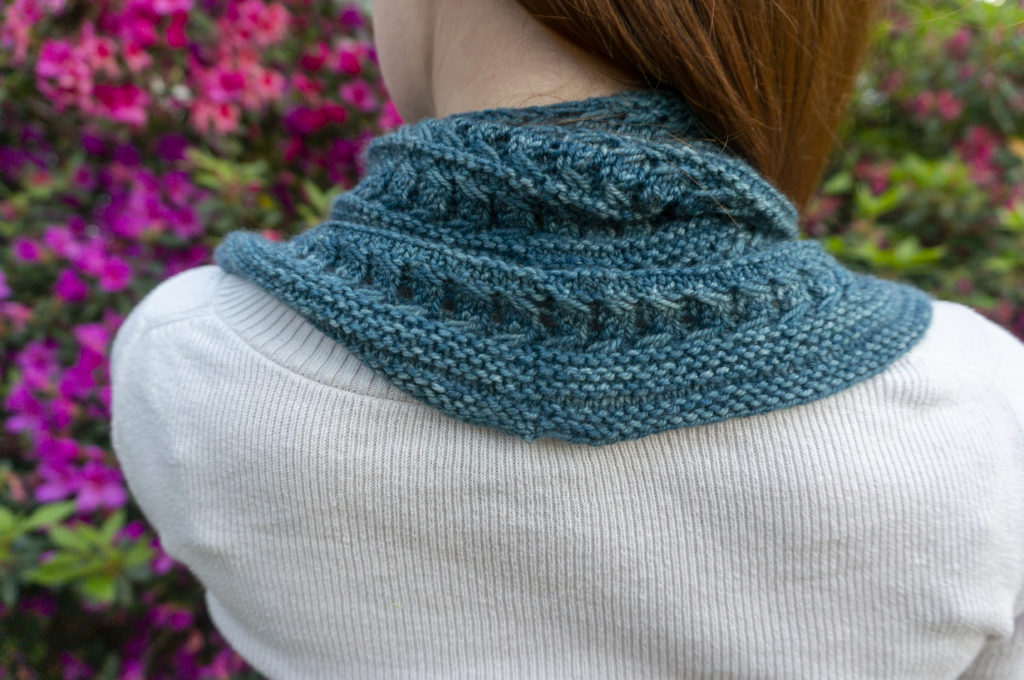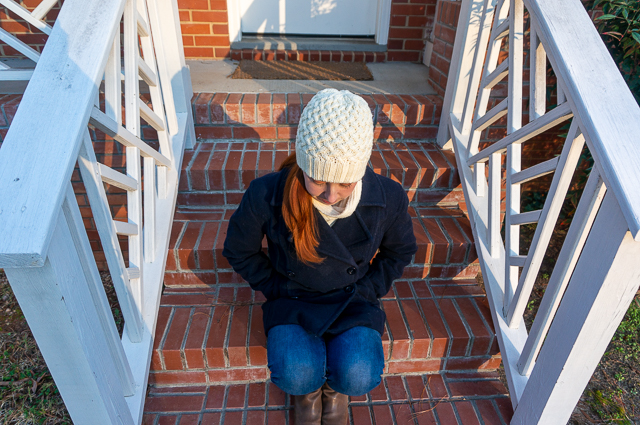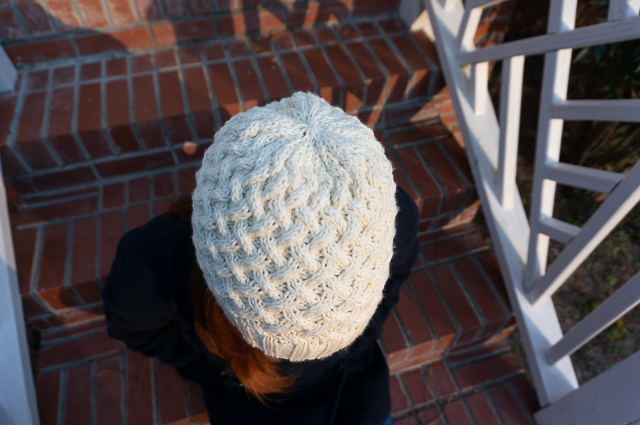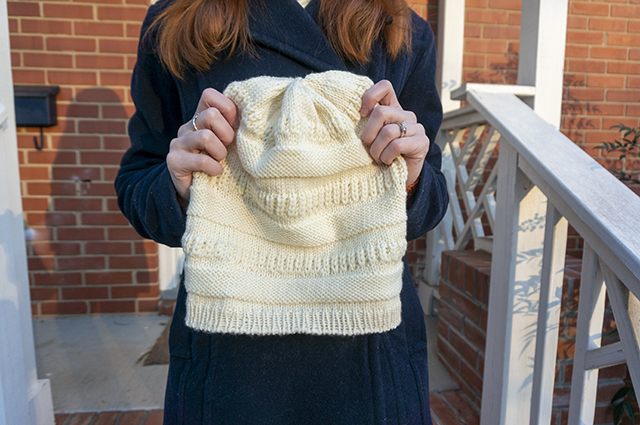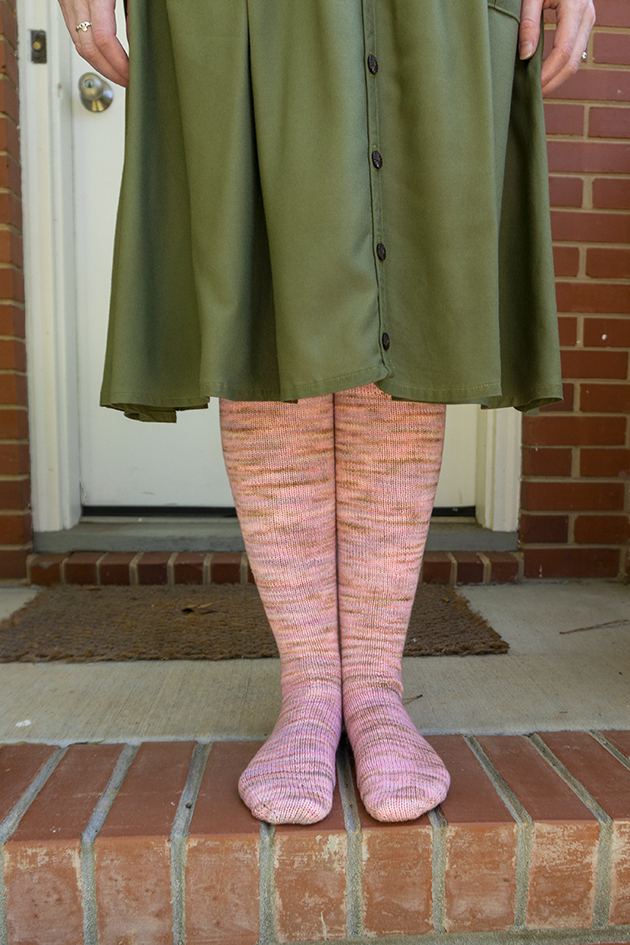
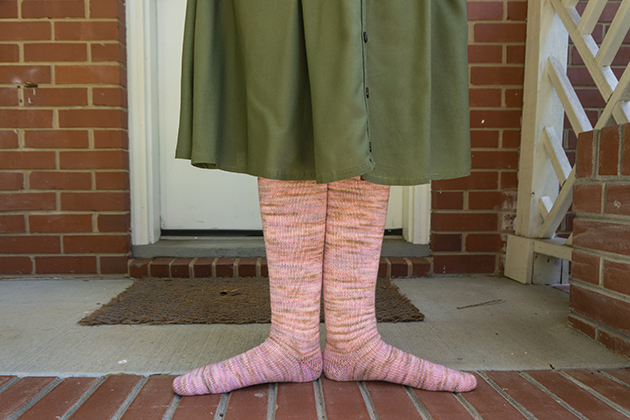
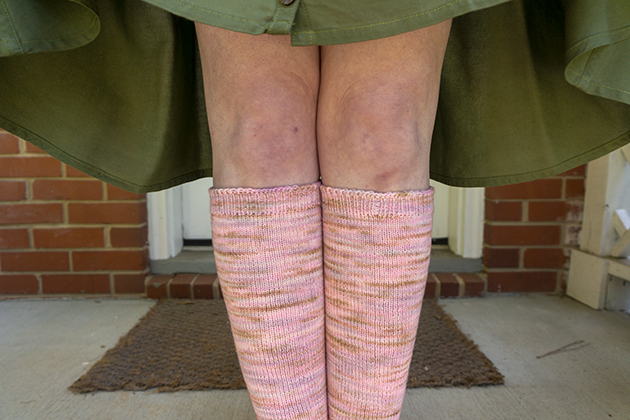
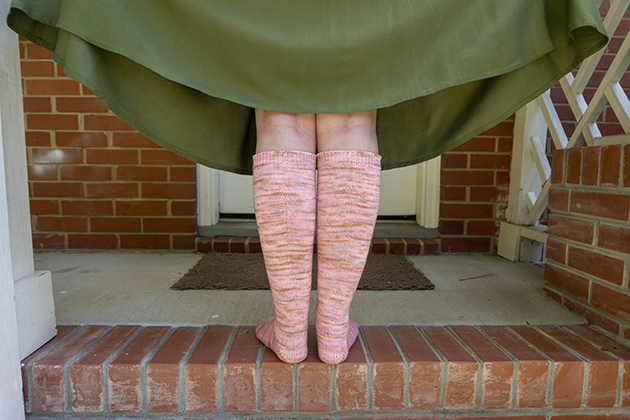
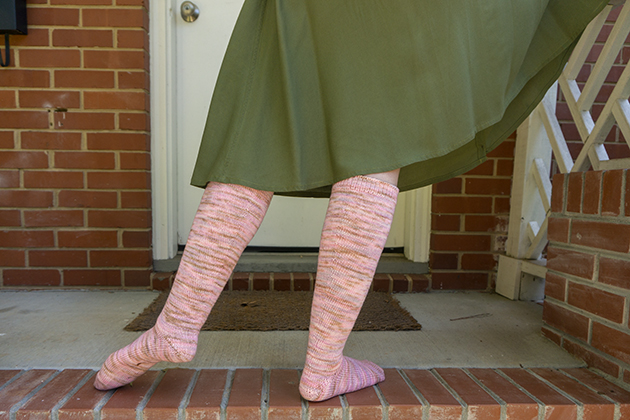
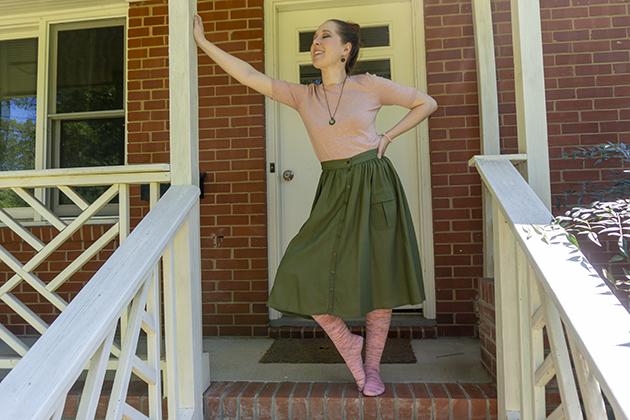
I’m generally a selfish maker, I make no bones about that. While I’ve made a handful of things for others, I typically stick to things I’ve already made for myself and feel comfortable with. The exception to this practice is socks: the first properly wearable pair I made were a gift for my sister-in-law. Before that, I’d attempted a pair of ankle socks for myself (abandoned after the first sock for being too big in every dimension) and then a pair of crew socks (recycled because the yarn was unpleasant to wear). Multiple failed attempts combined with a general dislike for small circumference knitting had me pretty well convinced that handmade socks were not in my future.
Except that I rather like wool socks! I have several pairs in different styles from SmartWool, and my friends rave about Bombas. I figured I needed to give it one last solid try before giving up completely. I was also in need of a portable project during a meetup, and socks are nothing if not quintessential handbag knitting.
I hastily cast on before leaving the house, which proved unnecessary as I ended up doing no knitting whatsoever that night. Sock #1 languished in its bag for weeks and then months while I started and then finished ten other knitting projects instead, 2019 rolled over into 2020, and then kept right on rolling along.
I bound off the first sock 18 months after I started it, and then proceeded to knit the second sock in about 2 weeks, because it was clear if I didn’t do it immediately I would never do it at all.
As the title suggests, I didn’t use a particular pattern, but instead combined several techniques to get a custom fitting toe-up sock, including using Judy’s Magic Cast On (free), the Fish Lips Kiss Heel ($1), and Jenny’s Surprisingly Stretch Bind Off (free). I only shelled out for the FLK Heel instructions because I wasn’t happy with any of the short row heel methods I’d already tried, and I do feel like I got a better result with them than I had with the other methods.
But like many knitters before me, I found the instructions frankly obnoxious. They’re far, far longer than they need to be, the formatting is ugly as well as unfriendly to anyone who doesn’t want to read a novel, and the “mother knows best” tone is grating when you don’t think knitting socks is a thing to be frightened of. I’ve half a mind to rewrite the dang thing—I’m betting I could fit all of the essential material on the front and back of a single letter-sized sheet, which would be much easier to reference than the 16 pages that come in the packet.
Anyway.
I ended up with knee socks because I’d divided the cake into two equal balls by mass to start and then knit until I ran out of yarn. (OH YEAH, the yarn! It’s Hedgehog Fibres Sock in color Whisper, purchased from Warm ‘n Fuzzy in Cary.) Luckily for me, the first ball was slightly shorter than the second; I matched the second sock to the first with a scant 9 yards leftover, and no ripping and re-knitting to make them identical. Small victories, right?
After wearing them around, I feel like they’re just a smidge short, stopping on my calf muscle instead of behind my knee. As a result, they want to start wriggling their way instead of staying firmly in place. I may run a length of elastic cord through the top edge to give them more staying power.
Other than their height, they fit quite well. I’m pleased that my calculated rate of increase worked out and netted me a snug but not tight fit around my larger-than-average calves. I look forward to wearing them when I finally get to break out my tall boots. (Soon…)
Outfit Details
Sweater: H&M | Skirt: Colette Zinnia | Earrings: Polished coconut shell/maker unknown | Necklace: Plaid Love Threads | Bracelet: Old/unknown

